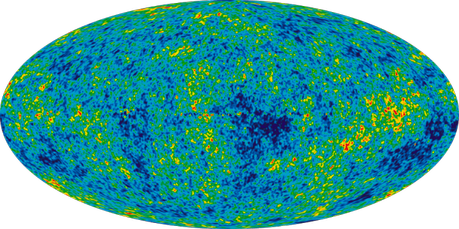
Image from wikipedia.org.
Scientists at the Harvard-Smithsonian Center for Astrophysics have recently announced that they completed the first detection of a gravitational wave in our universe. The report is still awaiting peer review, but if confirmed, this will be one of the most important discoveries in scientific history.
In Einstein’s Theory of Relativity, which he published in 1905, he first proposed the concept of gravitational waves. In Relativity, Einstein suggested that the force of gravity would move through space in waves caused by large masses such as planets and stars.
While there has been an ever-increasing amount of evidence for the wave like motion of gravity, it has taken scientists over a century to finally detect an actual gravity wave itself.
The scientists studying this matter claim to have observed the gravitational waves using the readouts of the Cosmic Microwave Background (CMB). The CMB is comprised of residual radiation in our universe from just after the Big Bang. It was in the early 1990’s that physicists first suggested that gravitational waves might be able to be seen in the CMB.
European scientists utilizing the Planck Space Observatory, a satellite in Earth’s orbit, hoped to find the first evidence of gravitational waves. However, this discovery and subsequent new report originated in a much different location, the South Pole, according to a report in IFL Science.
The Background Imaging of Cosmic Extragalactic Polarization, or BICEP for short, was stationed near the South Pole in 2005 and has worked been used to provide a map of the CMB ever since. The cold, dry air of the region is what allows for the telescope to be so successful in studying microwave radiation.
“Detecting this signal is one of the most important goals in cosmology today. A lot of work by a lot of people has led up to this point,” said Professor John Kovac, who has served as the head of this project and works for the Harvard-Smithsonian Center for Astrophysics.
On top of proving Einstein’s theory of gravitational waves, this discovery could also prove the Theory of Inflation. This theory suggests that in the very early phases of the universe, it inflated at an astronomical (pun intended) pace.
This theory suggests that such inflation would have produced massive gravitational waves that should still be observable with modern instruments, even 13.8 billion years after they were initially formed. By proving the existence of these waves, scientists believe that would also serve to prove the occurrence of inflation.
While these findings are still under peer review, they nonetheless make for one of the most awe inspiring scientific discoveries we could hope to bear witness to.

